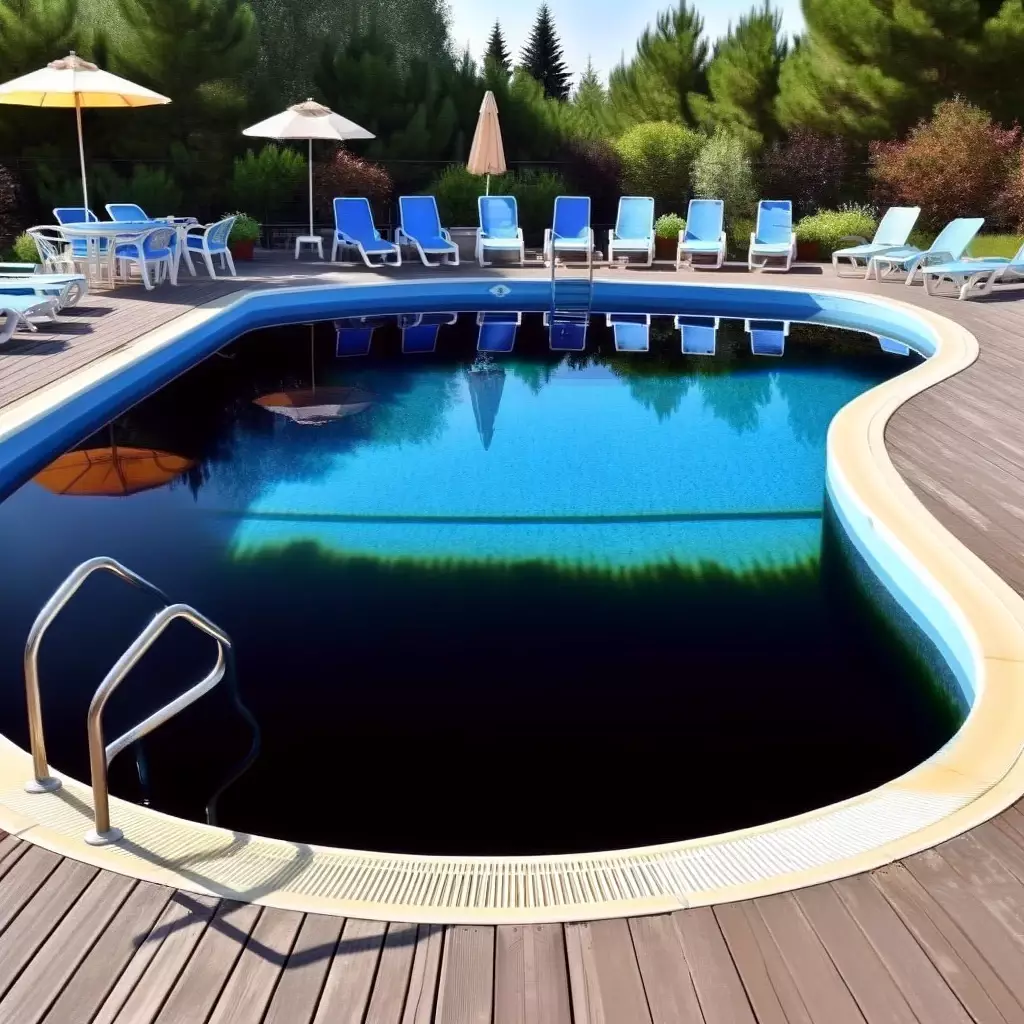The color changes in swimming pool water often perplex and frustrate pool owners. The transition of pool water color from clear to green or even turbid not only affects the aesthetic appeal of the pool but also poses potential health hazards. This article scientifically explains the reasons behind the coloration of swimming pool water and proposes corresponding strategies. Based on this, the project intends to conduct routine maintenance and care of swimming pools from the perspectives of chemical imbalance, environmental impact, and improper maintenance, aiming to restore the cleanliness and safety of the pool water.
Main Reasons for Color Changes in Pool Water
Algal Bloom in Pools
When the water body is under heavy load, chlorination or ozonation, the main disinfectants, are occupied with degrading organic matter shed by swimmers and cannot handle algae spores brought in by dust. In conditions suitable for algal growth (light, temperature, carbon dioxide, nutrients), algae rapidly proliferate, turning the pool water green. For instance, a hot summer thunderstorm can convert nitrogen in the lightning into nitrates, a primary nutrient for algae, which then enters the pool, resulting in a green algal bloom.

High Mineral Content in Water
In thermal or mineral springs, or pools without heating costs or those recently filled, the large volume of water introduced can result in high concentrations of heavy metals like iron, copper, or manganese. The addition of oxidizing disinfectants like chlorine or ozone can cause oxidation, leading to odd water colors. Moreover, the use of copper sulfate, aluminum sulfate, or polyaluminum chloride without proper control of total alkalinity can lead to the formation of opaque blue compounds like copper hydroxide or carbonates, or milky white aluminum hydroxides.
Screening Process Ejecta
Accumulated pollutants in the pool water can cause displacement and loosening of the filter membrane, allowing impurities that should have been filtered to seep through, resulting in dark green or black water leakage.
Original Color of Disinfectants
Chlorine in disinfectants is yellow-green and has a low molecular weight, making it less likely to color the water, while bromine, with a larger molecular weight, appears reddish-brown and can easily produce a dark green color upon reflection. Furthermore, chlorine dioxide, due to its strong fluorescence, can easily cause local or entire pools to turn yellow-green when added. Therefore, we usually use trichloroisocyanuric acid and copper sulfate for disinfection.
Chlorine Deficiency
In situations of heavy water load and low hypochlorite content, the pool cannot immediately respond to the chlorine demand of the water. When the oxidation-reduction potential of the water rapidly drops below 600 mv, organic matter in the water emulsifies, leading to a whitish turbidity.
Solutions for Water Color Changes in Swimming Pools
Due to the characteristics of the pool water temperature and the presence of body oils and impact foam, the cleaner used captures bubbles, which rise to the surface through collision with the bubbles, concentrating colored substances like oils and iron on the surface. They are then cleaned using surface cleaning devices or blade filters. This not only achieves oil removal but also improves the red, yellow, green, and black colors of the pool water, with effects noticeable within an hour.
When water exhibits strange colors like green, yellow, brown, or black, the primary reason is the presence of a large amount of colored minerals in the water. Suddenly adding oxidizing disinfectants like chlorine or ozone in conditions of high total alkalinity can cause a change in water color due to the oxidation of soluble minerals.
Therefore, the change in the coloration of swimming pool water is a complex process formed by multiple factors. From chemical to environmental effects, any factor can cause discoloration in pool water. Through this article, not only can we deepen our understanding of the reasons behind the color changes in pool water, but we can also better grasp the corresponding solutions.
